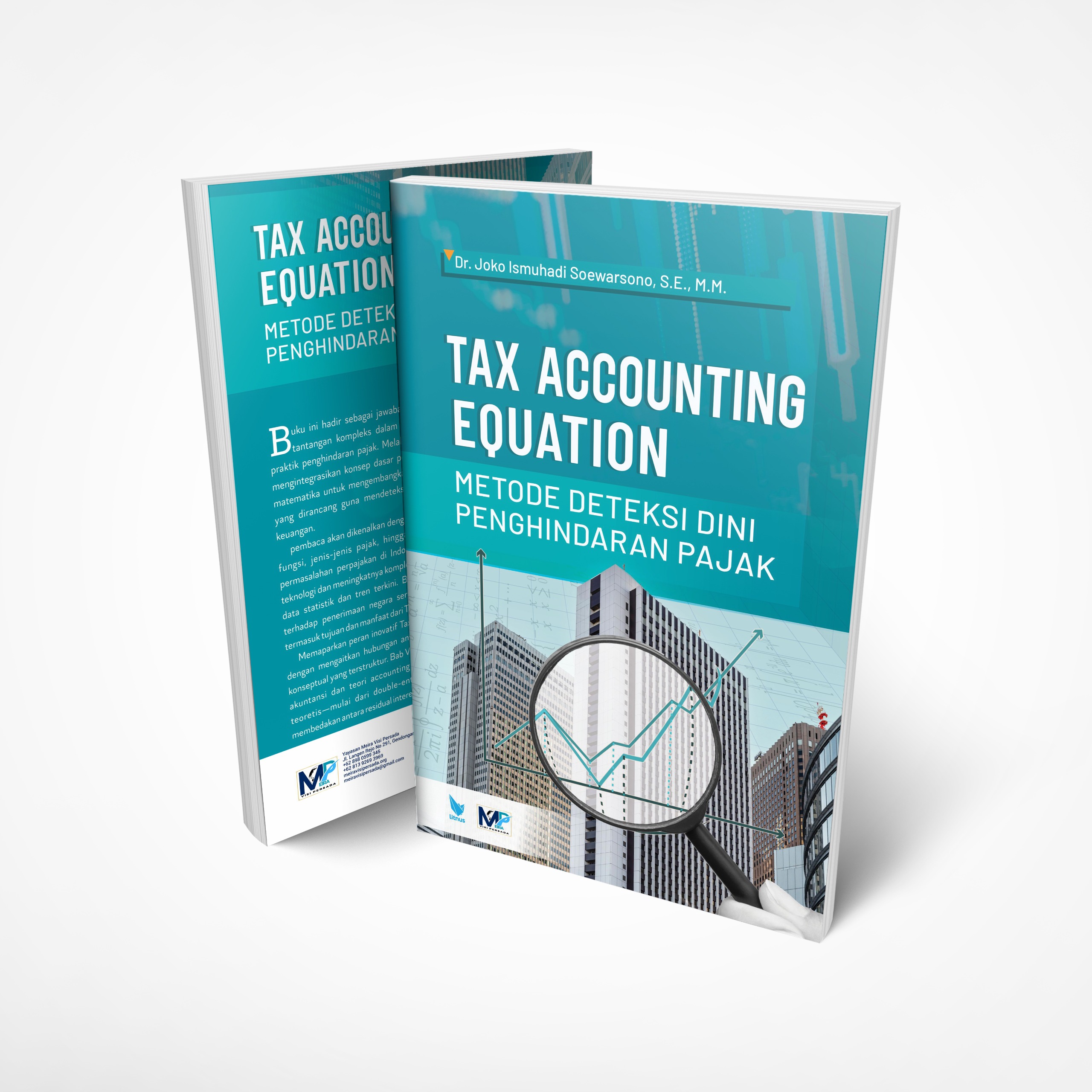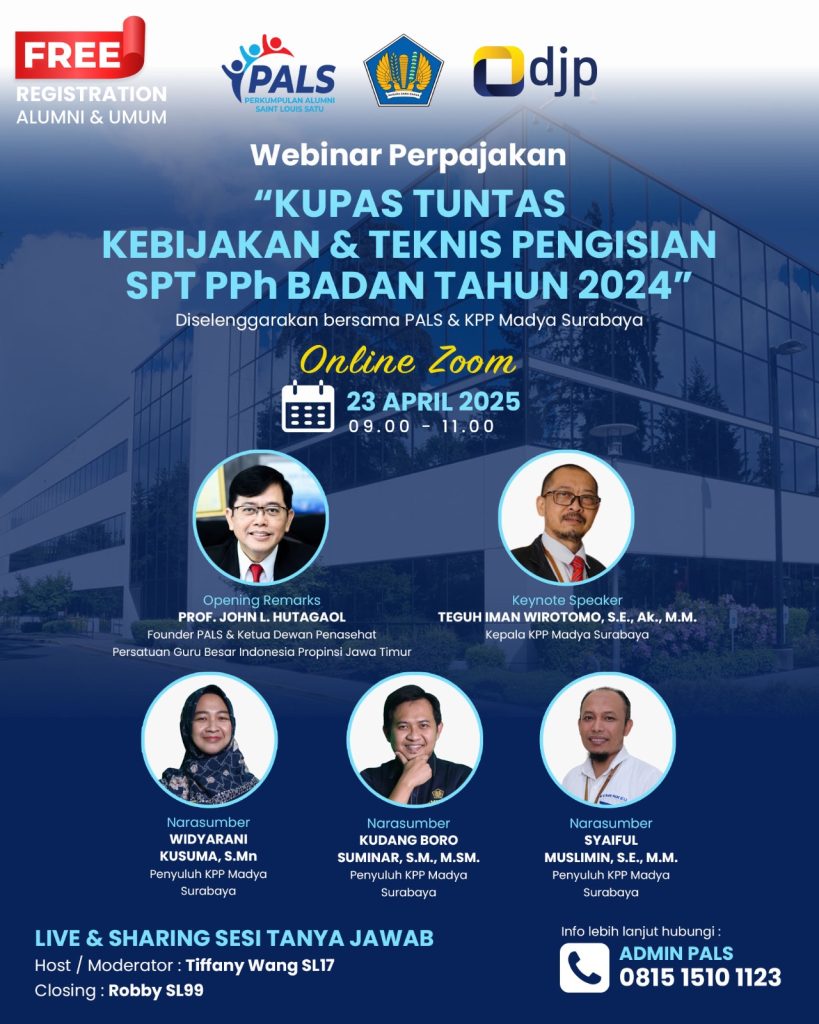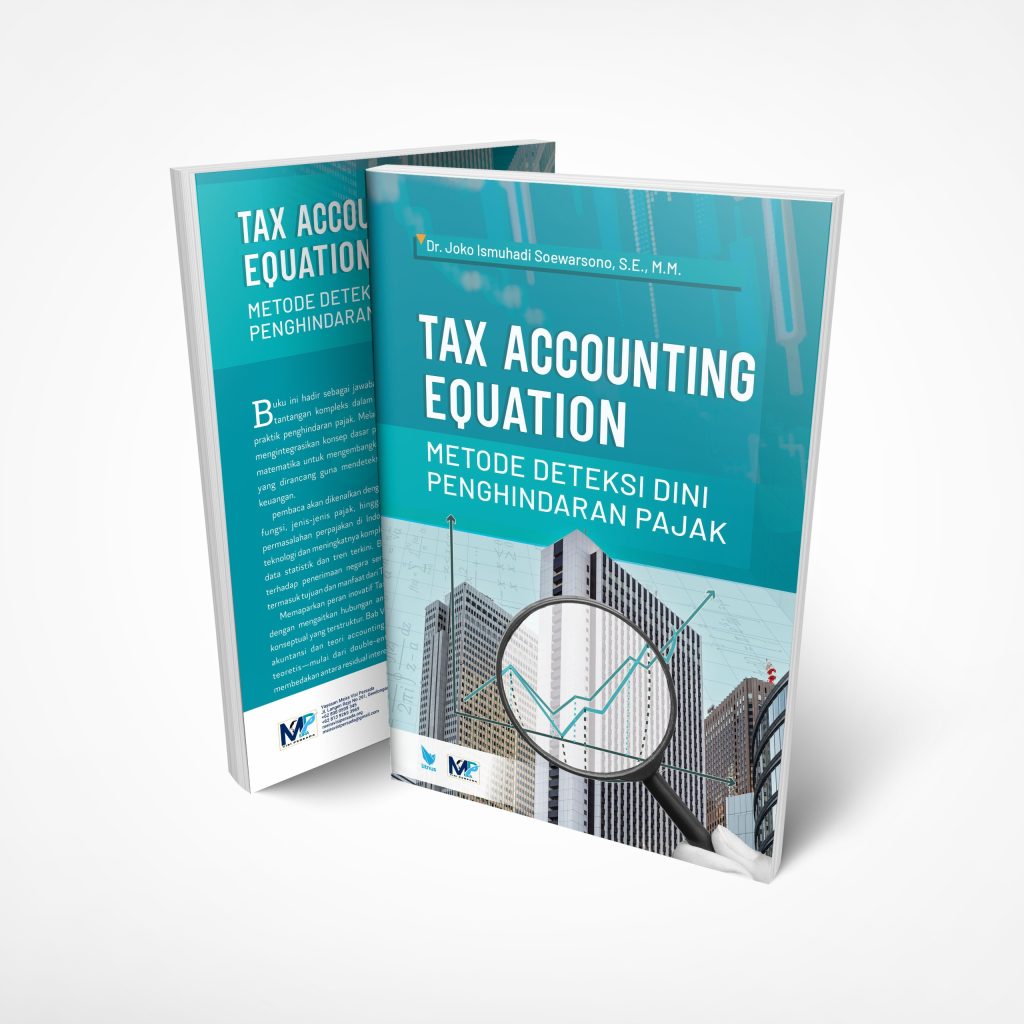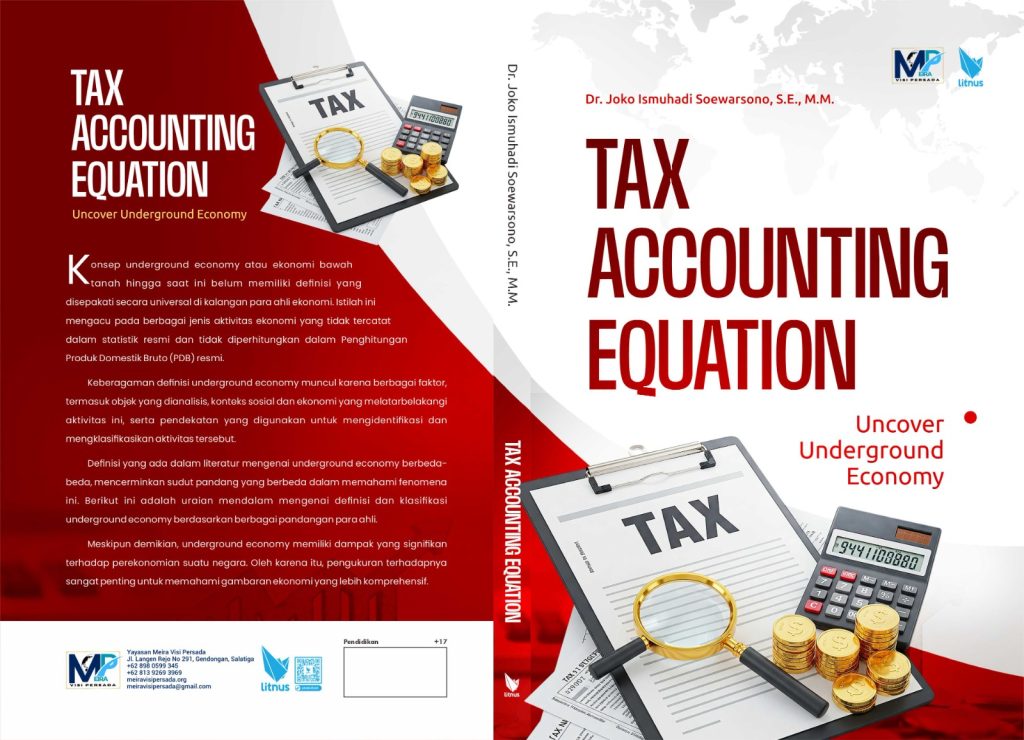
The Ismuhadi Equation: An Indonesian Innovation in Forensic Tax Analysis
- Ekonomi
Friday, 09 May 2025 09:57 WIB

Jakarta, fiskusnews.com:
The escalating sophistication of financial transactions worldwide necessitates the continuous advancement of forensic accounting techniques to effectively counter increasingly complex methods of concealing illicit financial activities. Tax authorities globally face the persistent challenge of accurately assessing tax liabilities due to the intricate nature of modern financial operations, which often allows for the obfuscation of genuine economic activity. In the specific context of Indonesia, the economic environment presents distinct hurdles to ensuring tax compliance. The considerable presence of an informal or underground economy, alongside a diverse range of business practices, demands the implementation of specifically tailored methodologies to identify and address tax evasion. While fundamental accounting principles provide a crucial foundation, they may not always be sufficiently nuanced to detect the specific forms of tax avoidance prevalent within the Indonesian financial landscape.
The Ismuhadi Equation, encompassing both the Tax Accounting Equation (TAE) and the Mathematical Accounting Equation (MAE), represents a significant and contextually relevant innovation originating from within Indonesia. Developed with a profound understanding of the Indonesian tax system and its inherent complexities, this equation offers a novel framework for forensic tax analysis, explicitly designed to enhance the detection of financial irregularities and the evasion of tax obligations. This development signifies a proactive response to the unique challenges posed by the Indonesian economic environment.
Dr. Joko Ismuhadi, an Indonesian tax specialist, academic, and practitioner, is the intellectual force behind this innovative equation. His unique professional trajectory, which combines practical experience as a tax auditor and supervisor within the Directorate General of Taxes in Jakarta with rigorous academic pursuits, including a PhD in Accounting and a doctorate in tax law, provides him with invaluable insights into the multifaceted challenges confronting Indonesian tax authorities. His extensive research focusing on advanced tax planning strategies, financial manipulation techniques, and the intricacies of money laundering further underscores his profound expertise in this critical domain. The creation of a tax-specific accounting equation for Indonesia reflects a targeted approach to overcome the limitations of standard accounting principles in addressing the specific nuances of tax compliance within the nation’s unique economic and regulatory framework.
The fundamental accounting equation, expressed as Assets = Liabilities + Owner’s Equity (or more simply, Assets = Liabilities + Equity), forms the bedrock of financial accounting. This equation, attributed to Luca Pacioli in the 15th century, has served as a foundational principle for understanding the financial position of entities for centuries. It provides a static representation of a company’s financial standing at a specific point in time, illustrating the equilibrium between the resources a company owns (assets) and the sources from which those resources were financed, whether through borrowing (liabilities) or investments from owners (equity).
While this foundational equation is indispensable for gaining a basic understanding of an entity’s overall financial health, its inherent generality can limit its effectiveness in detecting sophisticated tax evasion schemes. Tax evasion often involves the manipulation of specific financial statement components, particularly revenue and expenses, over extended reporting periods. These manipulations, while potentially distorting the overall financial picture, might not always create an immediately obvious imbalance in the basic accounting equation. Furthermore, the disguising of economic activities through intricate financial transactions can further obscure these irregularities, making them difficult to identify using only the fundamental accounting equation. The reliance on this fundamental principle as a starting point for the Ismuhadi Equation suggests an evolutionary approach, wherein a well-established concept is adapted to address the specific and evolving challenges of tax enforcement rather than introducing an entirely new theoretical paradigm.
In response to the limitations of the fundamental accounting equation in the specific context of tax analysis, Dr. Ismuhadi developed the Tax Accounting Equation (TAE). This equation is presented in two interconnected forms, strategically placing emphasis on revenue as a critical indicator of a company’s economic activity and its subsequent tax obligations. The two primary formulations of the TAE are:
- Form 1: Revenue – Expenses = Assets – Liabilities
- Form 2: Revenue = Expenses + Assets – Liabilities
To fully comprehend the analytical power of this equation, a detailed explanation of each of its components is essential:
- Revenue: Represents the total inflow of economic benefits during the period arising in the course of the ordinary activities of an entity when those inflows result in increases in equity, other than increases relating to contributions from equity participants. Revenue is a direct measure of a company’s economic activity and forms the basis for many tax calculations, making it a primary target for manipulation in tax evasion schemes.
- Expenses: Encompass all outflows or depletion of economic benefits during the period in the form of outflows or depletions of assets or incurrences of liabilities that result in decreases in equity, other than those relating to distributions to equity participants. Inflating expenses is a common tactic employed to reduce reported profits and, consequently, the amount of tax liability. Therefore, the relationship between the reported revenue and the associated expenses is a crucial area for scrutiny in forensic tax analysis.
- Assets: Represent economic resources controlled by the entity as a result of past events and from which future economic benefits are expected to flow to the entity. Significant and unexplained increases in a company’s asset base, particularly when not accompanied by corresponding increases in reported revenue or owner’s equity, can serve as a significant indicator of hidden income or other potential financial irregularities that may be linked to tax evasion.
- Liabilities: Represent present obligations of the entity arising from past events, the settlement of which is expected to result in an outflow from the entity of resources embodying economic benefits. An unusually high level of liabilities in relation to a company’s reported revenue growth could suggest a deliberate attempt to mask income as debt, thereby artificially reducing the company’s reported profitability and its resulting tax burden.
The fundamental rationale behind prioritizing revenue within the TAE stems from the recognition that revenue is the primary driver of a company’s economic activity and, consequently, a key determinant of its tax obligations. By strategically placing revenue at the forefront of the equation, Dr. Ismuhadi aims to establish a more direct and transparent link between a company’s reported income and its overall financial position. This shift in focus facilitates a more effective examination of potential underreporting of income, which is a common method employed in tax evasion schemes.
The underlying mathematical principle of the TAE is the establishment of an anticipated equilibrium between a company’s profitability, as reflected in its income statement (Revenue – Expenses), and its net worth, as presented on its balance sheet (Assets – Liabilities). By mathematically connecting these essential financial reporting components, the TAE provides tax authorities with a structured framework for quantitatively assessing the integrity of financial statements. Significant deviations from these expected relationships can then serve as critical indicators of potential tax avoidance or even fraudulent activities warranting further investigation. The two forms of TAE offer distinct yet complementary perspectives for tax analysis, enabling tax authorities to scrutinize financial data from multiple angles. The first form directly compares a company’s profitability with its net worth, while the second form emphasizes whether the generated revenue is sufficient to cover the operating expenses and contribute to the overall growth of the company’s net assets.
Recognizing that certain sophisticated tax evasion strategies might involve scenarios where taxable income is intentionally reported as being zero or even negative to minimize tax liabilities, Dr. Ismuhadi further formulated the Mathematical Accounting Equation (MAE). This variation of the Ismuhadi Equation is specifically tailored to analyze situations where traditional income-focused equations alone might not fully reveal the extent of potential tax avoidance. The MAE is presented in the following form:
Assets + Dividen + Beban = Kewajiban + Ekuitas + Pendapatan
An alternative, reversed form of the MAE is also significant for analytical purposes:
Asset = Liability + Equity + {(Revenues – Expenses) – Dividend}
The MAE expands upon the TAE by incorporating an additional critical element:
- Dividend (Dividen/Dividend): Represents the distribution of a company’s accumulated earnings to its shareholders. The inclusion of dividends in the MAE provides an additional dimension for analyzing the consistency and plausibility of a company’s reported financial performance. For instance, a company that consistently reports minimal profits for tax purposes but simultaneously distributes substantial dividends to its owners might warrant closer scrutiny from tax authorities.
- Beban (Expenses): This is the Indonesian term for expenses, consistent with the formula provided in the snippets, emphasizing its role in the overall financial equilibrium.
- Kewajiban (Liabilities): This is the Indonesian term for liabilities, highlighting its position as a source of financing for the company’s assets.
- Ekuitas (Equity): This is the Indonesian term for equity, representing the residual interest of the owners in the assets of the entity after deducting all liabilities.
- Pendapatan (Revenue): This is the Indonesian term for revenue, underscoring its fundamental importance as the primary driver of economic activity and the basis for taxation.
Dr. Ismuhadi strategically links the MAE to the very definition of Income as stipulated in Article 4 Paragraph (1) of the Indonesian Income Tax Law (UU PPh). This legal provision defines income as any accretion of economic power received or accrued by the taxpayer. Dr. Ismuhadi posits that the MAE can serve as a valuable tool to assess whether the reported revenues of a taxpayer are indeed consistent with the expected increase in their economic capacity, as reflected in their asset holdings, equity position, and ability to distribute dividends to shareholders.
The MAE proves to be particularly insightful in identifying specific types of tax evasion tactics, including:
- Detection of Back-to-Back Loan Schemes: In such arrangements, taxpayers might attempt to disguise revenue generated from sales or services as proceeds from debt in a series of reciprocal loan transactions involving related parties. The intention behind such schemes is typically to avoid recognizing the income as taxable revenue. The MAE can potentially uncover these inconsistencies by revealing a significant increase in liabilities (the purported “loan”) that is not logically supported by corresponding increases in assets or equity derived from genuine revenue-generating activities. Dr. Ismuhadi himself notes that in these scenarios, there is often a tendency for taxpayers to report “Revenues = (negative) Liabilities,” indicating a deliberate mischaracterization of taxable income as non-taxable debt.
- Assessing Corporate Income Tax Contribution: The MAE can also be effectively employed to evaluate whether a company’s reported financial performance is reasonably aligned with its contribution to corporate income tax. A situation where a company reports minimal profits for tax purposes, coupled with an absence of any significant change in equity from retained earnings and no declaration of dividends, could suggest the potential concealment of actual profits. The MAE provides a framework for identifying such discrepancies and prompting further investigation. The inclusion of dividends and the direct connection to Indonesian tax law in the MAE demonstrate a more profound level of analysis in detecting tax avoidance, extending beyond the fundamental relationships captured by the TAE.
The Ismuhadi Equation, in its various forms, offers several critical applications for forensic tax analysis within the Indonesian context. One of its primary uses lies in the early detection of potential tax avoidance schemes. By scrutinizing financial statements through the lens of the TAE, Indonesian tax authorities can identify inconsistencies that may indicate intentional misreporting of revenue or expenses. For example, if a company reports substantially low revenues or excessively high expenses while simultaneously exhibiting an unexplained growth in its asset base, the TAE can flag this anomaly for further review.
The TAE is also particularly effective in analyzing discrepancies in a company’s liabilities. An unusually high level of liabilities in relation to the reported revenue growth of a company can serve as a strong indicator that the company might be attempting to conceal income by classifying it as debt, thereby reducing its taxable profit. Furthermore, a significant volume of liabilities owed to related parties could suggest the use of transfer pricing manipulation, a common tactic for tax evasion, particularly within multinational corporations operating in Indonesia.
The second formulation of the TAE is specifically designed to evaluate the sufficiency of a company’s reported revenue. It enables tax authorities to assess whether the revenue declared by a company is adequate to cover its stated operating expenses and contribute reasonably to its overall net asset value. Unusually low reported revenue when compared to a company’s expenditures and the value of its net assets can raise legitimate concerns about the potential underreporting of income.
Moreover, the Ismuhadi Equation can be instrumental in identifying misleading accounting transactions. Taxpayers might attempt to obscure their true financial performance by intentionally misclassifying income as liabilities or expenses as assets. The use of clearing accounts, which are temporary accounts intended to have a zero balance at the end of an accounting period, can facilitate such misrecording. Persistent and significant balances in clearing accounts, especially when they reflect unusual inverse relationships between revenue and liabilities or expenses and assets, can be detected through the application of the Ismuhadi Equation.
Given the prevalence of intricate corporate structures within Indonesia, the TAE is a valuable tool for scrutinizing transactions between related parties. These transactions, particularly within vertically integrated groups of companies, can be strategically designed to artificially shift profits or inflate costs to minimize the overall tax liability of the group. By applying the TAE to the financial statements of each entity within the related group, tax authorities can uncover inconsistencies and potentially tax-avoidant transactions, such as a mining company reporting substantial export revenue alongside unusually high liabilities to its parent company, which could indicate transfer pricing manipulation.
By providing a quantitative framework for the analysis of financial data, the Ismuhadi Equation can significantly enhance the efficiency of tax audits conducted by Indonesian tax authorities. Instead of relying on resource-intensive random audits, tax authorities can utilize the equation to screen a large volume of financial data and identify companies that exhibit potentially suspicious financial patterns. This targeted approach allows for a more focused allocation of audit resources, thereby increasing the likelihood of uncovering tax fraud and improving the overall effectiveness of tax enforcement efforts.
Finally, the Ismuhadi Equation has important implications for combating the underground economy within Indonesia. By focusing on the fundamental logical alignment between reported revenue and other key financial elements, the equation directly addresses the core of tax evasion, which often involves the underreporting of income – a major contributing factor to the shadow economy. Analyzing aggregate economic data using the Ismuhadi framework could potentially reveal discrepancies that suggest the presence of a substantial amount of hidden economic activity, such as a significant disparity between a nation’s reported GDP and its estimated levels of consumption. The versatility of the Ismuhadi Equation across different levels of financial analysis highlights its potential as a comprehensive tool for Indonesian tax authorities.
The Ismuhadi Equation stands as a valuable and purpose-built forensic accounting tool for the Indonesian tax authorities. Its primary function is to serve as an efficient screening mechanism for financial data, enabling tax officials to identify companies that exhibit potentially suspicious financial patterns warranting further, more in-depth investigation. The introduction of this equation marks a significant step towards a more sophisticated, forensic, and data-driven approach to combating tax evasion within Indonesia. By providing a mathematically sound framework for the analysis of financial data, the Ismuhadi Equation empowers tax authorities to move beyond traditional, often qualitative, assessments of financial statements and adopt a more objective and precise quantitative methodology for identifying potential irregularities.
It is important to note that the Ismuhadi Equation is not intended to replace existing forensic accounting techniques entirely but rather to serve as a powerful complement to them. It can be effectively integrated with various data analytics tools and other established investigative methods, thereby significantly strengthening the overall tax enforcement capabilities of the Indonesian government. Ultimately, by facilitating the more accurate identification and targeted investigation of tax evaders, the Ismuhadi Equation has the potential to significantly improve tax compliance rates throughout Indonesia. The resulting increase in tax revenue can then be strategically directed towards funding essential public services, including critical areas such as healthcare, education, and infrastructure development, thereby contributing to a more equitable and prosperous future for Indonesian society. Dr. Ismuhadi himself underscores the practical utility of his work, explicitly stating that his publication, “Tax Accounting Equation (TAE): early detection tax avoidance and/or tax evasion,” is specifically intended as an early detection tool for corporate taxpayers engaged in tax avoidance and/or evasion. Furthermore, Joko Ismuhadi’s clear intention is for the TAE to function as a valuable analytical instrument for tax authorities when they are examining the financial statements of taxpayers, with the overarching objective of enabling the early detection of potential tax avoidance and/or embezzlement, with a particular emphasis on the unique financial and regulatory context of Indonesia.
To illustrate the practical application of the Ismuhadi Equation, consider the following scenarios:
- Example 1: Understated Revenue with Increased Assets: A company consistently reports modest revenue growth year after year. However, a closer examination of its balance sheet reveals a significant and unexplained accumulation of cash or other highly liquid assets. Applying the second form of the TAE (Revenue = Expenses + Assets – Liabilities), if the reported revenue remains consistently low while the company’s assets show a substantial increase, and its expenses and liabilities remain relatively stable, this discrepancy would likely result in a significant imbalance in the equation. This imbalance could serve as a strong indicator of potential undeclared or hidden income that has not been subjected to taxation, prompting tax authorities to initiate a more thorough investigation into the company’s financial affairs.
- Example 2: Inflated Expenses without Corresponding Asset Changes: A company suddenly reports a substantial and unusual increase in its operational expenses during a particular financial period. However, this reported surge in expenses is not accompanied by a logical and corresponding decrease in the company’s asset holdings or a significant rise in its liabilities that would typically be associated with such increased expenditure. Utilizing the first form of the TAE (Revenue – Expenses = Assets – Liabilities), if the reported expenses are significantly higher without a commensurate increase in the company’s revenue or a notable decrease in its assets, the equation would likely be out of equilibrium. This imbalance could potentially indicate an artificial inflation of expenses, a common tactic used to reduce the company’s reported taxable profit and, consequently, its tax liability.
- Example 3: High Liabilities to Related Parties Indicating Transfer Pricing: A multinational mining company operating within Indonesia declares substantial revenue generated from its export activities. However, its balance sheet also reveals an unusually high level of liabilities owed to its parent company or other affiliated entities located in jurisdictions with significantly lower tax rates. Applying the TAE to the financial statements of this company could suggest a potential instance of transfer pricing manipulation. The high revenue generated from operations in Indonesia might be strategically offset by these inflated liabilities to related parties, effectively shifting profits out of Indonesia and into lower-tax jurisdictions, thereby reducing the company’s overall tax obligations within Indonesia. This scenario would warrant a detailed investigation by tax authorities into the specific terms and commercial justification for these related-party liabilities.
- Example 4: Detection of Disguised Revenue through Back-to-Back Loans using MAE: A company receives a large sum of money, which it records in its financial statements as a loan obtained from a related party, leading to a substantial increase in its reported liabilities. However, this significant increase in liabilities is not accompanied by a corresponding growth in the company’s assets that are directly related to its core business operations or any significant increase in its reported revenue. Applying the MAE (Asset = Liability + Equity + {(Revenues – Expenses) – Dividend}), if the company’s assets remain relatively stable despite the substantial rise in its liabilities, and its reported revenue remains minimal, this could indicate that the purported “loan” transaction is not a genuine debt arrangement but rather a disguised form of revenue that the company is intentionally attempting to conceal from tax authorities. Dr. Ismuhadi’s specific observation that in such cases, “Revenues = (negative) Liabilities,” effectively highlights this potential red flag that the MAE is designed to detect.
- Inspiration from Real-World Observations: The conceptualization and development of the Ismuhadi Equation were likely significantly influenced by real-world observations of inconsistencies and anomalies in financial reporting practices within Indonesia. For instance, Dr. Ismuhadi may have identified recurring patterns in specific industries, such as the Crude Palm Oil (CPO) sector, where companies reported financial results that appeared contradictory or illogical. These contradictions might have included instances where companies declared financial losses for tax purposes while simultaneously exhibiting other financial indicators suggesting underlying financial strength, such as the overpayment of Value Added Tax (VAT) or reporting a higher tax base for employee income tax. These real-world anomalies and apparent discrepancies likely provided the initial impetus and crucial insights for Dr. Ismuhadi to develop a more targeted and effective analytical tool like the Ismuhadi Equation to address these specific challenges in forensic tax analysis.
The Ismuhadi Equation, comprising both the Tax Accounting Equation (TAE) and the Mathematical Accounting Equation (MAE), represents a significant and contextually vital Indonesian innovation in the field of forensic tax analysis. It offers a mathematically rigorous framework designed to enhance the detection of financial irregularities and the pervasive issue of tax evasion. The development of this equation by Dr. Joko Ismuhadi, a distinguished tax expert whose professional journey seamlessly integrates practical experience in tax administration with rigorous academic research, underscores the paramount importance of fostering strong collaborative relationships between tax authorities and institutions of higher learning. His profound understanding of both the theoretical underpinnings of taxation and the practical realities of tax enforcement within Indonesia has been instrumental in the creation of this specifically targeted analytical tool. Furthermore, his authorship of the book “MEMBONGKAR KEJAHATAN KEUANGAN: Penyelidikan tentang Manipulasi Pajak dan Pencucian Uang di Dunia Korporat” (Unmasking Financial Crimes: Investigation of Tax Manipulation and Money Laundering in the Corporate World) further emphasizes his unwavering commitment to combating financial crimes that significantly erode state revenue.
The Ismuhadi Equation’s deliberate focus on the intricate relationship between revenue and balance sheet components within the TAE, coupled with the MAE’s strategic inclusion of dividend distributions and its direct and explicit connection to the Indonesian Income Tax Law, renders it a particularly well-suited and relevant tool for addressing the unique and complex challenges of tax compliance within the specific Indonesian economic and regulatory landscape. This includes the critical need to effectively tackle the significant prevalence of the informal or underground economy and the various sophisticated tax evasion tactics that are often employed by both individuals and corporate entities operating within the country. By facilitating a fundamental shift towards a more data-driven, quantitative, and demonstrably forensic approach to tax enforcement, the Ismuhadi Equation holds substantial potential for modernizing tax administration practices throughout Indonesia. This modernization can lead to a significant improvement in overall tax compliance rates, the promotion of greater fairness and equity within the tax system, and the enhancement of transparency and accountability in financial reporting practices, ultimately contributing to the long-term economic well-being and stability of the nation. Looking towards the future, continued rigorous research into the practical effectiveness and potential areas for refinement of the Ismuhadi Equation, alongside ongoing innovation in accounting practices and forensic techniques, will be absolutely essential to ensure that tax authorities in Indonesia remain adequately equipped to effectively counter the ever-evolving methods of tax evasion and to steadfastly safeguard the overall integrity of the national tax system. The development and promotion of the Ismuhadi Equation underscore the increasing importance of adopting interdisciplinary approaches, effectively combining established accounting principles with mathematical rigor to address complex and multifaceted issues such as tax evasion.
Table: Forms of Ismuhadi’s Equation
| Equation Name | Formula | Primary Analytical Focus |
|---|---|---|
| Tax Accounting Equation (TAE) – Form 1 | Revenue – Expenses = Assets – Liabilities | Examines the equilibrium between profitability and net worth |
| Tax Accounting Equation (TAE) – Form 2 | Revenue = Expenses + Assets – Liabilities | Emphasizes the sufficiency of revenue to cover costs and build net assets |
| Mathematical Accounting Equation (MAE) | Assets + Dividen + Beban = Kewajiban + Ekuitas + Pendapatan | Provides a comprehensive view linking assets, liabilities, equity, revenue, expenses, and dividends |
| Mathematical Accounting Equation (MAE) – Reversed Form | Asset = Liability + Equity + {(Revenues – Expenses) – Dividend} | Offers an alternative perspective on the equilibrium of financial elements, particularly useful for linking to the definition of income under Indonesian tax law |
Table: Key Applications of Ismuhadi’s Equation in Tax Analysis
| Application Area | Explanation of How Ismuhadi’s Equation Facilitates Detection | |
|---|---|---|
| Early Detection of Tax Avoidance | Flags imbalances between reported revenue, expenses, assets, and liabilities that deviate from expected norms | |
| Identification of Liability Discrepancies | Highlights unusually high levels of liabilities relative to revenue, potentially indicating income masking | |
| Evaluation of Revenue Sufficiency | Assesses whether reported revenue is adequate to cover expenses and contribute to net asset growth, revealing potential underreporting | |
| Detection of Misleading Accounting Transactions | Uncovers unusual inverse relationships between revenue/liabilities or expenses/assets, often associated with the misuse of clearing accounts | |
| Scrutiny of Related Party Transactions for Transfer Pricing | Helps identify inconsistencies in financial statements of related entities that may suggest artificial profit shifting or cost inflation | |
| Enhancement of Audit Efficiency and Targeting | Enables tax authorities to prioritize audits of entities exhibiting suspicious financial patterns identified by the equation | |
| Identification of Potential Hidden Economic Activity | Reveals discrepancies in aggregate economic data that may point to the existence of a significant underground economy |
Reporter: Marshanda Gita – Pertapsi Muda
Share
Berita Lainnya
Requiescat in pace, Paus Fransiskus
Analyzing Tax Avoidance Strategies Through Dr. Joko Ismuhadi’s Tax Accounting Equation in the Indonesian Context
Dr. Joko Ismuhadi’s Tax Accounting Equation: A Forensic Tool for Uncovering Indonesia’s Underground Economy
Menganalisis Strategi Penghindaran Pajak Melalui Persamaan Akuntansi Pajak Dr. Joko Ismuhadi dalam Konteks Indonesia
Mengapa Harus Memilih Program Kami?
Jaminan Kerahasiaan atas Data dan Informasi Wajib Pajak
Rekomendasi untuk Anda

Berita Terbaru
Eksplor lebih dalam berita dan program khas fiskusnews.com
Tag Terpopuler
# #TAE
# #TAX ACCOUNTING EQUATION
# #TAX FRAUD
# #TAX EVASION













